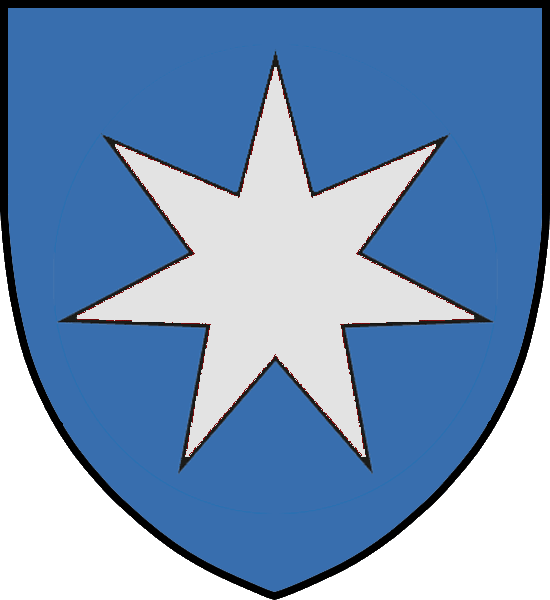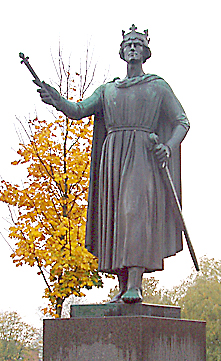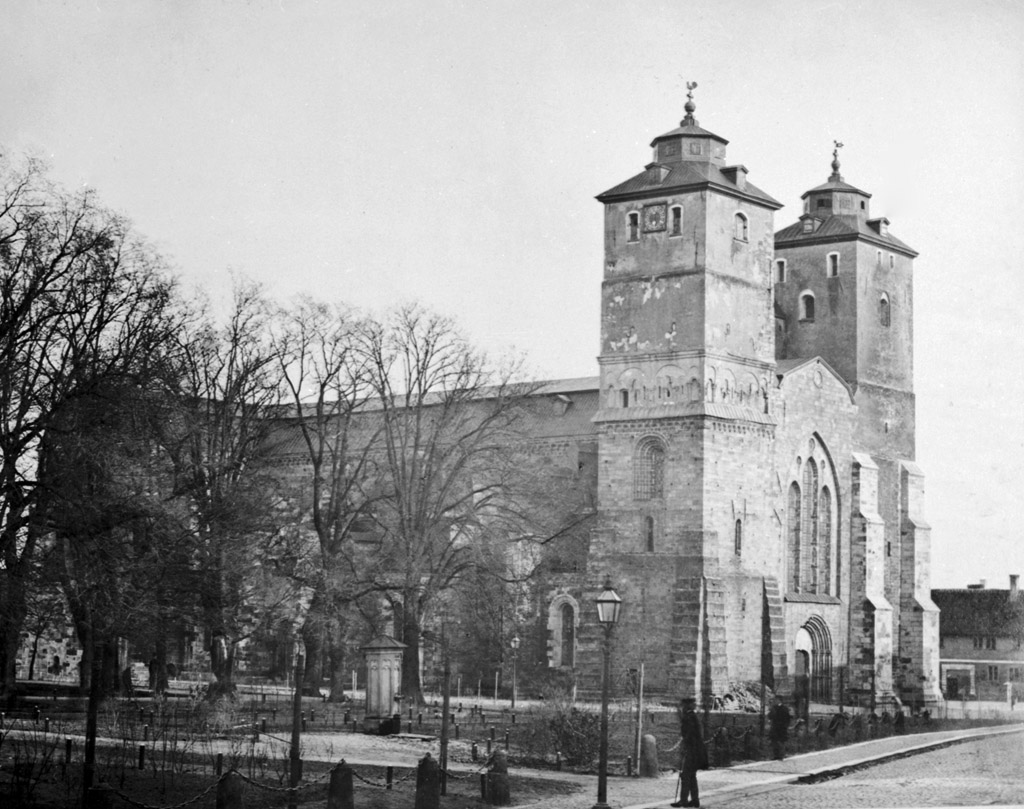|
Hvide
Hvide (English: ''Whites'') was a medieval Danish clan, and afterwards in early modern era a Danish noble surname of presumably one surviving branch of leaders of that clan. Before the 16th century it was not used as a surname. It signified the color white. Medieval Hvide clan The Hvide were influential in the Danish island of Zealand, and occasionally in other close parts of the country, such as other Danish islands and Skåne. They had a stronghold in Jørlunde. A folktale of the clan name contrasts this clan against the "black" clan of Viking leaders of Skåne (that then belonged to Denmark but now belongs to Sweden) ("Svarte Skåning") who had Thor as their chief god. The white islander clan were "protectees" of non-black god Odin. The Hvide leaders seem to have been among first to convert to Christianity, and later, the clansmen regularly rose to highest positions of Danish church, including several Roman Catholic archbishops of Lund. Several leaders of the clan and of ... [...More Info...] [...Related Items...] OR: [Wikipedia] [Google] [Baidu] |
Skjalm Hvide
Skjalm Hvide (before 1045 – c. 1113), was the Earl of Zealand in Denmark in the end of the Viking Age (793–1066) and up to his death. Skjalm's father was Toke Trylle, whose father was ''Slag'' (or ''Slau'', or he may have been called by both names), based on ''Absalon'', a medieval account scanned, translated and published by Google. Skjalm Hvide was very rich. He was one of the most influential and powerful chiefs in Denmark in the Middle Ages, and the most powerful chief of his era, i.e. the late Viking Age, late 11th century and early 12th century. He is regarded as the founder of the Hvide Clan, the name ''Hvide'' signifying the color white. During the transition ending the Viking Age and a few centuries ahead, the Hvide clan was a dominant factor in the Danish power politics. [...More Info...] [...Related Items...] OR: [Wikipedia] [Google] [Baidu] |
Christina Hvide
Christina Hvide (in Swedish: ''Kristina Stigsdotter'') (c. 1145 – c. 1200) was Queen of Sweden as the wife of King Charles VII and the mother of King Sverker II of Sweden. Life Christina ''Stigsdatter'' was the daughter of the Danish nobleman Stig Tokesen (died 1150) of the Hvide family from Scania (then a Danish province) and the Danish Princess Margaret of Denmark who was the daughter of Canute Lavard. She was married to King Charles VII of Sweden in 1163 (or 1164) and was in Sweden known as Queen Kristina. In 1163, the Swedish jarl Guttorm greeted her in Scania and travelled with her to Sweden, but it is guessed that the ceremony took place after the inauguration of the new archbishop Stefan (archbishop of Uppsala) Stefan (before 1143 – 18 July 1185) was created the first Archbishop of Uppsala in Sweden in the year 1164, a post he held until his death. Stefan was a Cistercian monk from Alvastra monastery (of which he was one of the founders in 1143). His ... in 1 ... [...More Info...] [...Related Items...] OR: [Wikipedia] [Google] [Baidu] |
Jørlunde
Jørlunde is a village with a population of 299 (1 January 2022) in North Zealand in Denmark. In the late Viking age and early medieval age, Jørlunde was the center of the Hvide clan. Jørlunde Church (''Joerlunde Kirke'') was erected by Skjalm Hvide Skjalm Hvide (before 1045 – c. 1113), was the Earl of Zealand in Denmark in the end of the Viking Age (793–1066) and up to his death. Skjalm's father was Toke Trylle, whose father was ''Slag'' (or ''Slau'', or he may have been called by bo ... around the year 1100. References External linksJørlunde Church website {{DEFAULTSORT:Jorlunde Villages in Denmark ... [...More Info...] [...Related Items...] OR: [Wikipedia] [Google] [Baidu] |
Esbern Snare
Esbern Snare, also known as Esbern the Resolute, (1127–1204) was a '' høvding'', or chieftain, royal chancellor and crusader. His family were members of the powerful Hvide clan. In 1192, during the Crusades and after the fall of Jerusalem, he led a small group of Danish soldiers to the Holy Land. Upon his return, he had the Church of Our Lady, Kalundborg built. Early life Born in 1127, Snare was the eldest son of Asser Rig (c. 1080–1151), also called Asser the rich, of the Hvide clan. Esbern's mother, Lady Inge, was the daughter of and Princess Cecilia Knutsdatter. He was the grandson of Skjalm Hvide and great-grandson of Canute IV of Denmark (c. 1042 – 10 July 1086), the first Danish king (1080–1086) to be canonized. His family lived in Fjenneslev, Zealand. His brother was Absalon (c. 1128–1201), who became a powerful warrior leader and main advisor to Danish kings, and also Bishop of Roskilde and later Archbishop of Lund. Valdemar was his foster brother. H ... [...More Info...] [...Related Items...] OR: [Wikipedia] [Google] [Baidu] |
Absalon
Absalon (21 March 1201) was a Danish statesman and prelate of the Catholic Church who served as the bishop of Roskilde from 1158 to 1192 and archbishop of Lund from 1178 until his death. He was the foremost politician and church father of Denmark in the second half of the 12th century, and was the closest advisor of King Valdemar I of Denmark. He was a key figure in the Danish policies of territorial expansion in the Baltic Sea, Europeanization in close relationship with the Holy See, and reform in the relation between the Church and the public. He combined the ideals of Gregorian Reform with loyal support of a strong monarchical power. Absalon was born into the powerful '' Hvide'' clan, and owned great land possessions. He endowed several church institutions, most prominently his family's Sorø Abbey. He was granted lands by the crown, and built the first fortification of the city that evolved into modern-day Copenhagen. His titles were passed on to his nephews Anders Sunesen ... [...More Info...] [...Related Items...] OR: [Wikipedia] [Google] [Baidu] |
Charles VII Of Sweden
Charles VII or Carl ( Swedish: ''Karl Sverkersson''; c. 1130 – 12 April 1167) was ruler of Götaland, and then King of Sweden from c. 1161 to 1167, when he was assassinated in a military attack by Knut Eriksson who succeeded him as Canute I. He is the first historically known king of Sweden by the name of Charles, but use of the ordinal VII is widespread. Pretender to the throne Charles was the son of Sverker I, who was assassinated in December 1156. A pretender from another family, Eric IX (whom later generations dubbed martyr and saint), ruled over parts of Sweden in the following years. However, Charles was chosen king by the people of Östergötland in c. 1158, apparently in opposition to Eric. A letter from pope Hadrianus IV (d. 1159) knows him as ruler of ''regnum Gothorum'' although Eric is known to have held power in Västergötland. It is claimed in a late medieval chronicle that Eric's murder by minions of their rival Magnus Henriksson in 1160 was also backed by Char ... [...More Info...] [...Related Items...] OR: [Wikipedia] [Google] [Baidu] |
Valdemar I Of Denmark
Valdemar I (14 January 1131 – 12 May 1182), also known as Valdemar the Great ( da, Valdemar den Store), was King of Denmark from 1154 until his death in 1182. The reign of King Valdemar I saw the rise of Denmark, which reached its medieval zenith under his son King Valdemar II. Childhood Valdemar was the son of Canute Lavard, Duke of Schleswig, the chivalrous and popular eldest son of King Eric I of Denmark. Valdemar's father was murdered by King Magnus I of Sweden days before the birth of Valdemar; his mother, Ingeborg of Kiev, daughter of Grand Prince Mstislav I of Kiev and Christina Ingesdotter of Sweden, named him after her grandfather, Grand Prince Vladimir Monomakh of Kiev. Valdemar was raised at Ringsted in the court of Danish nobleman Asser Rig of Fjenneslev (c. 1080–1151). Asser was a member of the Hvide noble family and had been raised together with Valdemar's father Canute Lavard. Valdemar was raised together with Asser's sons, including Absalon (c. 1128–1 ... [...More Info...] [...Related Items...] OR: [Wikipedia] [Google] [Baidu] |
Archbishop Of Lund
List of (arch)bishops of Lund. Until the Danish Reformation the centre of a great Latin (arch)bishopric, Lund has been in Sweden since the Treaty of Roskilde in 1658. The Diocese of Lund is now one of thirteen in the Church of Sweden. Catholic Episcopate ''(all Roman Rite; some dates disputed according to the source) ;''Suffragan Bishops of Lund'' * Henrik (1060–1065? or 1048? – death 1060.08.21) * Egino (1065? – death 1072.10.19); ?former bishop of Dalby * Ricwald (1072?1075 – death 1089.05.26) * Ascer (1089–1103 ''see below'') ;''Metropolitan Archbishops of Lund'' * Ascer (''see above'' 1103 – death 1137.05.05) * Eskil (1138?1137–1177?1179) * Absalon Hvide (1177?1179 – death 1201.03.21) * Andreas Sunesen (1201–1222?1223) * Peder Saxesen (1224.01.11 – death 1228.07.11) * Uffe Thrugotsen (1228?1230 – death 1252.12.15) * Jakob Erlandsen (1253.08.13 – death 1274.02.18) * Trugot Torstensen (1276?1277.01.13 – death 1280.05.02) * Jens Dros (1 ... [...More Info...] [...Related Items...] OR: [Wikipedia] [Google] [Baidu] |
Knud Lavard
Canute Lavard ( Danish: Knud Lavard; cognate with English Lord) (12 March 1096 – 7 January 1131) was a Danish prince. Later he was the first Duke of Schleswig and the first border prince who was both a Danish and a German vassal, a position leading towards the historical double position of Southern Jutland. He was killed by his cousin Magnus (later King Magnus I of Sweden; ca. 1106–1134), who saw him as a rival to the Danish throne. Canute Lavard was canonized in 1170. He was an ancestor of the Valdemarian kings (''Valdemarerne'') and of their subsequent royal line. Canute Lavard was the father of King Valdemar I of Denmark (''Valdemar den Store'') and grandfather of King Valdemar II of Denmark (''Valdemar Sejr''). Biography Canute was the only legitimate son of King Eric I of Denmark (died 1103) and Boedil Thurgotsdatter, but as a minor he was bypassed in the election of 1104. He grew up in close contact with the noble family of Hvide, who were later on to be among his ... [...More Info...] [...Related Items...] OR: [Wikipedia] [Google] [Baidu] |
Lund
Lund (, , ) is a city in the southern Swedish province of Scania, across the Öresund strait from Copenhagen. The town had 91,940 inhabitants out of a municipal total of 121,510 . It is the seat of Lund Municipality, Scania County. The Öresund Region, which includes Lund, is home to more than 4.1 million people. Archeologists date the foundation of Lund to around 990, when Scania was part of Denmark. From 1103 it was the seat of the Catholic Metropolitan Archdiocese of Lund, and the towering Lund Cathedral, built circa 1090–1145, still stands at the centre of the town. Denmark ceded the city to Sweden in the Treaty of Roskilde in 1658, and its status as part of Sweden was formalised in 1720. Lund University, established in 1666, is one of Scandinavia's oldest and largest institutions for education and research.Lund University , ''The So ... [...More Info...] [...Related Items...] OR: [Wikipedia] [Google] [Baidu] |
Kalundborg Castle
Kalundborg () is a Danish city with a population of 16,211 (1 January 2022),BY3: population 1. January by urban areas, area and population density The Mobile Statbank from Statistics Denmark the main town of the municipality of the same name and the site of its municipal council. It is situated on the northwestern coast of the largest Danish island, Zealand (or Sjælland in Danish), on the opposite, eastern side of which lies the capital |


.jpg)



.jpg)
